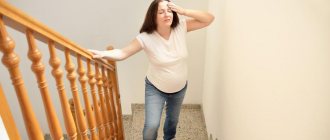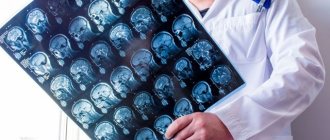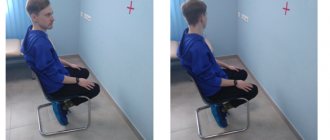Why does dizziness and unsteadiness occur when walking? Recommendations for resolving the problem.
Modern man lives so dynamically that sometimes he does not notice that his body is sending him warning signals that it is time to stop and rest. As a rule, the first sign of internal problems is dizziness. At first, this symptom will be almost unnoticeable and will appear at those moments when a person rises sharply or walks very quickly.
But as the condition worsens, dizziness will become more pronounced and will begin to be accompanied by accompanying symptoms - weakness, nausea, shortness of breath, headache and darkening of the eyes. Such manifestations will indicate that internal reserves are on the verge, and it’s time to start working closely with your body. We will talk about what can cause such problems and how to deal with them in our article.
Why does one feel unsteady, unsteady, or dizzy when walking: possible causes of illness
Causes of dizziness
I would like to say right away that dizziness does not always indicate the development of serious internal problems. If the day before you worked very hard physically, then it is likely that your body will produce more adrenaline than necessary during the night and this will lead to fatigue, drowsiness and dizziness. In this case, you just need to rest a little and as soon as the body restores its internal reserves, your condition will return to normal.
Other causes of dizziness:
- Bad habits. If a person smokes a huge number of cigarettes during the day, then in the evening he will feel dizzy. In a similar way, the body will react to excessive vasodilation and, as a result, improper functioning of the vascular and circulatory system. Alcohol, strong tea and coffee affect a person in the same way. In view of this, if you constantly have a similar effect on your blood vessels, the problem will only get worse.
- Problems with the vestibular apparatus. In this case, the cause of the problem may be not entirely correct functioning of the cerebral cortex. If it does not correctly receive impulses and send them back in time, then the nervous system will not respond to a person’s desire to move and, as a result, he will begin to experience softness in his gait, accompanied by pronounced dizziness. Against this background, Meniere's disease or vestibular neuronitis may develop.
- Parkinson's disease and polyneuropathy. As a rule, these diseases appear against the background of problems with the nervous system. Due to nervous exhaustion and constant anxiety, a person may become absent-minded, which will simply prevent him from monitoring his movements. If the neurosis worsens very much, then the person will definitely begin to feel dizzy and have weakness in the muscles.
- Osteochondrosis and atherosclerosis. These diseases interfere with proper blood circulation throughout the body and as a result, a person begins to suffer from oxygen starvation. If the previously mentioned pathologies become very aggravated, the vascular system and the cerebral cortex will begin to suffer more than others. And as soon as they stop working normally, unpleasant symptoms immediately appear in the form of dizziness, nausea and improper coordination of movements.
- Hypertension, hypotension and VSD. The cause of these pathologies is the same vascular system. If the walls of large and small vessels become less elastic, this leads to the fact that the pressure in the blood either increases greatly (leading to hypertension) or decreases sharply and signs of hypotension appear. As for VSD, it is a consequence of persistent vasospasm.
Determination of previous diseases
Previous medical conditions such as injuries, heart attacks, strokes or herniated discs should also be taken into account to determine the cause of difficulty walking. The doctor usually conducts a detailed consultation with the patient in order to narrow the list of symptoms. The consultation also includes questions about feelings and imbalances. Additional research may also be required, such as:
- Eyesight check,
- Hearing test
- Blood analysis,
- Cerebrospinal fluid puncture (examination of the fluid structure of the brain),
- Computed tomography (CT),
- Magnetic resonance imaging (MRI),
- Electroencephalography (EEG),
- Electromyography (EMG).
Feeling of dizziness and unsteadiness of gait when walking in the dark: how to treat?
List of medications for the treatment of dizziness
If you experience unsteadiness in your gait and dizziness only in the dark, it is likely that you have problems with your eyes. In order to confirm or refute such a diagnosis, you will need to contact an ophthalmologist and undergo a full examination.
Typically, this problem is caused by high eye pressure. Also, a similar problem can be provoked by otolaryngological pathologies. Inflammation of the sinuses or ear can provoke vasospasm and against this background unpleasant symptoms may appear. If these pathologies are excluded, you will have to treat neuralgia.
List of medications:
- Betahistine (will help restore cerebral circulation)
- Reklanium
(will establish the correct functioning of the vestibular apparatus) - Nimodipine
(relieves vasospasm and establishes proper oxygen supply to the blood) - Kaviton-forte
(is a mild stimulator of cerebral circulation) - Metacin (helps improve nutrition of cerebral cortex tissue)
- Pilocarpine (a drug to reduce eye pressure)
- Betoptik (reduces fluid flow to the eyeball)
When to see a doctor?
Stumbling while walking that is not associated with injury is a reason to consult a doctor. Sometimes, when this symptom appears, immediate medical attention is needed. Alarm signals are8:
- sudden numbness, weakness of the limbs and/or half of the face;
- visual impairment;
- severe dizziness;
- sudden loss of coordination of movement;
- a sharp headache that was not there before;
- confusion;
- speech disorder.
Alarming symptoms may indicate a violation of cerebral circulation and the development of a stroke, so if they appear, you should immediately call an ambulance. In other cases, it is advisable to consult a doctor as planned to identify the cause of stumbling when walking and begin treatment.
References
- Kurbatov S. A., Nikitin S. S., Zakharova E. Yu. Late-onset Pompe disease with the phenotype of limb-girdle myodystrophy // Neuromuscular diseases, 2015. Vol. 5. No. 3.
- Danilova A. M., Leus P. V. TENDINITIS: METHODS OF PREVENTION AND TREATMENT //OlymPlus. Humanitarian version, 2021. No. 2. P. 96-97.
- Lobov A. S. Features of the functional state of the musculoskeletal system and blood circulation of the lower extremities in football players // Kuban. state University of Physics culture, sports and tourism, 2006.
- Sciatica. MSD Handbook. URL: https://www.msdmanuals.com/ru. Access date 04/15/2019.
- Yakushina T.I., Belova Yu.A. Psychotic disorders in multiple sclerosis // Journal of Neurology and Psychiatry named after. SS Korsakov. Special issues, 2021. T. 118. No. 8. P. 110-115.
- Doronin V.B., Doronina O.B. Hereditary muscular dystrophies // Bulletin of Siberian Medicine, 2009. Vol. 8. No. 3 (2). P.72-78.
- Sukhorukov V.S. et al. Diagnosis of Pompe disease // Russian Bulletin of Perinatology and Pediatrics, 2010. T. 55. No. 6. P. 23-34.
- Stroke Review. MSD Handbook. URL: https://www.msdmanuals.com/ru (accessed 12/18/2019).
GZEA.PD.18.09.0435u
What medications should be used for unsteady gait in the elderly?
Medicines for unsteady gait in the elderly
With age, all processes in the human body slow down. This inevitably begins to affect the functioning of internal organs and, as a result, causes appear that directly provoke the appearance of a shaky, uncertain gait.
A similar problem appears due to poor cerebral circulation, vision problems, muscle strain, and even due to diseases such as diabetes and Parkinson's disease. All these pathologies provoke functional disorders of the nervous system, which takes an active part in human movement.
Medicines that will help solve the problem:
- Bilobil. The drug is used to restore oxygen supply to the cerebral cortex. In addition, it effectively increases concentration, so that a person stops getting lost in space.
- Tolperisone. This medicine fights increased muscle tone, which slows down movements and prevents you from raising your legs in a timely manner. Another feature of Tolperisone is its pronounced analgesic effect.
- Ginkum. A medicine that restores metabolic processes in the walls of blood vessels, thereby making them more flexible and elastic.
Risk factors that may lead to walking impairment
Because difficulty walking is associated, among other things, with circulatory disorders, which are often associated with smoking, diabetes mellitus, high blood pressure (hypertension) and lipid disorders such as hyperlipidemia and hypercholesterolemia, which are major risk factors for peripheral artery disease. A healthy lifestyle is recommended. This also includes a balanced, low-fat diet and avoiding nicotine.
Wearing tight shoes that do not fit properly can also cause nerve compression in the feet, causing sufferers to become unsure when walking due to a feeling of numbness in the feet.
Vestibular gymnastics for unsteady gait: description, photo, video
Description of vestibular gymnastics
Recommendations for conducting vestibular gymnastics at home
Example of exercises No. 1
Example of exercises No. 2
Vestibular gymnastics, if done correctly, and most importantly regularly, can significantly improve the condition of the human body. True, in this case you need to remember that you cannot load yourself too much at once. If you try to load yourself to the maximum on the first day, you will end up worsening your condition even more.
Therefore, it will be better if you gradually accustom your body to stress. And although it will take you a little longer to fully recover, in the end you will be able to get a more lasting and noticeable therapeutic effect. You can see the description of the exercises in the photo posted a little higher.
Recommendations for conducting vestibular gymnastics at home:
- Always start charging with the easiest exercises and only when the muscle mass has warmed up a little, move on to more complex ones.
- If the unsteadiness of your gait is quite pronounced, then at the beginning of your journey, completely abandon sudden movements, jumping and walking in a straight line.
- For the first week, do only head exercises. As practice shows, during this period a person’s dizziness and nausea disappear, and he can calmly move on to heavier physical activity.
- In the second week, he can include exercises in a sitting position, as well as intense bending in a standing position. Remember that it is extremely important to breathe properly during such physical activity. If you do not monitor your breathing, you will eventually experience oxygen starvation.
- After two weeks, you can move on to walking, light jumping and squatting. Also during this period, you can try to stand on one leg with your eyes closed and even lightly box a non-existent opponent.








